#Mars SpaceX missions
Video
undefined
tumblr
Drone shot of Falcon Heavy's side boosters landing at LZ-1 and LZ-2
#spacex#Drone shot of Falcon Heavy's side boosters landing#falcon heavy#space exploration#awesome stuff#awesome#elon musk#mars mission#planet mars#mars colonization
18 notes
·
View notes
Text
Next Artemis mission to take four astronauts on a 10-day flyby of the Moon
Nasa’s Marshall has posted that the next Artemis mission to take four astronauts on a 10-day trip to flyby the Moon and confirm that all of Orion Spacecraft systems operate as designed with people aboard in deep space.
Leaving Earth
The mission will launch the four astronaut crew from NASA’s Kennedy Space Center in Florida in 2023, and will return using a hybrid free return trajectory.
Their…
2 notes
·
View notes
Link
Astronomy Daily - The Podcast: 10th October 2024
Welcome to Astronomy Daily, your Daily dose of space and Astronomy news. I'm your host, Anna. Today we have an exciting lineup of stories that I can't wait to share with you. First, we'll delve into NASA's Europa Clipper mission, which is ready to embark on an epic journey to Jupiter and its intriguing moon Europa. Then we'll talk about Elon Musk and SpaceX's ambitious plans to launch uncrewed starships to Mars in just two years, paving the way for future human colonization. We'll also uncover a groundbreaking study on fast radio bursts that might finally solve the mystery behind these cosmic phenomena. And if that isn't enough, we'll explore new findings suggesting the moon might still be volcanically active today. Lastly, we'll highlight NASA's innovative solar sail that you can actually spot from Earth. Buckle up, space enthusiasts. Let's dive in.
Highlights:
- NASA's Europa Clipper Mission: NASA's Europa Clipper spacecraft has reached a significant milestone by passing its final technical review. This means it's now all set for its journey towards Jupiter. With a launch window slated between October 10 and 30th, the mission aims to delve into the mysteries of Jupiter's moon Europa, potentially harboring an ocean beneath its icy crust.
- SpaceX's Mars Ambitions: Elon Musk recently announced that SpaceX plans to launch its first uncrewed starships to Mars within the next two years. These missions are crucial for testing the reliability of landing these advanced spacecraft intact on the Martian surface. If successful, crewed flights to Mars could follow just two years later, paving the way for human colonization.
- Fast Radio Bursts Mystery Possibly Solved: A groundbreaking new study by the Italian National Institute for Astrophysics has advanced our understanding of fast radio bursts (FRBs). Using the Very Large Array telescope, researchers recorded the weakest persistent radio emission for an FRB, shedding light on the mysterious origins of these powerful cosmic events.
- Volcanic Activity on the Moon: Recent findings from the Chinese Chang'e 5 mission suggest that the moon might still be volcanically active. Tiny glass beads found in lunar samples indicate that volcanic activity might have occurred as recently as 123 million years ago, challenging the traditional belief that lunar volcanism ceased 3 to 3.8 billion years ago.
- NASA's Solar Sail: NASA's advanced composite solar sail system is now visible from many locations around the world. This groundbreaking solar sail, which harnesses sunlight for propulsion, represents an exciting step towards more sustainable and accessible deep space missions. Engage with NASA's "Spot the Sail" campaign and track the solar sail using the free NASA app.
For more space news, be sure to visit our website at astronomydaily.io. There you can sign up for our free Daily newsletter, catch up on all the latest space and Astronomy news with our constantly updating news feed, and listen to all our back episodes.
Don't forget to follow us on social media. Just search for #AstroDailyPod on Facebook, X, YouTubeMusic, and TikTok to stay connected with our community and never miss an update.
Thank you for tuning in, and remember to keep your eyes on the skies. Until next time, may you be blessed with clear skies.
Sponsor Links:
NordVPN
NordPass
Malwarebytes
Proton Mail
Become a supporter of this podcast for commercial-free editions not very much moeny: https://www.spreaker.com/podcast/astronomy-daily-the-podcast--5648921/support
#array#binary#bursts#chang'e#clipper#elon#europa#fast#inaf#large#magnetar#mars#mission#musk#nasa#radio#spacex#telescope#very#x-ray
0 notes
Text
Aiming to launch first uncrewed Starship mission to Mars in 2 years: Musk

Tesla and SpaceX CEO Elon Musk on Sunday said that the first uncrewed Starship mission will be launched to the Red Planet in two years when the next Earth-Mars transfer window opens.
Starship is the world’s most powerful rocket and will be used to send humans to the Moon and then eventually to Mars.
Source: bhaskarlive.in
0 notes
Text
Commercialization and Space Exploration: A New Human Frontier

Overview: The Inception of Space Travel
Humanity has always been fascinated by space exploration. Space has always been associated with limitless possibilities, from the first time we gazed up at the stars to the first time humans set foot on the moon. For many years, only governments and a select group of highly skilled scientists had access to space exploration. But there has been a noticeable change in recent years. Now that private businesses are entering the race, everyone's dream of space travel is getting closer to reality. This piece examines the history of space exploration, the expanding influence of private industry, and the implications for the future.
Government-Led Space Exploration in the Beginning
The Cold War, which saw bitter rivalry between the US and the USSR, is when the history of space exploration first emerged. The space race began in 1957 with the Soviet Union's launch of Sputnik, the first artificial satellite. With swift succession, the US launched its own space missions, and Soviet cosmonaut Yuri Gagarin became the first person to orbit the Earth in 1961.
The successful landing of the first humans on the Moon by NASA's Apollo 11 mission in 1969 stands as the most iconic event of this era. "That's one small step for man, one giant leap for mankind," said astronaut Neil Armstrong, have come to represent the accomplishments of humanity. These missions were motivated by curiosity in science, pride in the country, and the drive to demonstrate one's superiority in technology.
Commercialization's Intensification
For a long time, space exploration was only affordable and feasible for governments. There was a lot of risk involved and this was cutting edge technology. But as technology developed, prices began to decline, ushering in a new era marked by the commercialization of space travel.
Visionary leaders such as Elon Musk, Jeff Bezos, and Richard Branson propelled the emergence of private companies such as SpaceX, Blue Origin, and Virgin Galactic. Space travel became more accessible and economical thanks to the new concepts and advancements these companies brought to the field.
SpaceX's Function: Transforming Space Travel
Elon Musk launched SpaceX in 2002, and it's arguably the most well-known business in the space sector. Musk's ultimate goal is to colonize Mars and wants to make space travel as commonplace as flying. SpaceX has accomplished a number of landmarks that were previously unthinkable.
The Genius Wave (Download)
The Dragon spacecraft was sent to the International Space Station (ISS) by SpaceX in 2012, making it the first private enterprise to do so. They created history once more in 2020 when they launched NASA astronauts on the Crew Dragon spacecraft to the International Space Station (ISS), becoming the first private company to send humans into space.
Reusable rocket development is one of SpaceX's biggest achievements. Due to the one-time nature of traditional rockets, space missions are exceedingly costly. SpaceX has significantly lowered the cost of space travel by developing rockets that can land back on Earth and be reused, creating new opportunities for exploration and commercialization.
Blue Origin: Creating Space Travel Opportunities
Jeff Bezos of Amazon founded Blue Origin, which has a slightly different goal than SpaceX. Blue Origin is committed to bringing space tourism to reality, while SpaceX is focused on exploring other planets. "Step by Step, Ferociously" is the company motto, "Gradatim Ferociter," which embodies its methodical and unwavering approach to accomplishing its objectives.
The New Shepard rocket from Blue Origin is intended to carry tourists on suborbital flights, providing them with a stunning view of Earth from space and a brief period of weightlessness. With Bezos aboard, the company successfully finished its first crewed mission in 2021. This was a big step toward allowing the general public to experience space tourism.
Virgin Galactic: Space Travel's Origins
Founded by Sir Richard Branson, Virgin Galactic is a significant participant in the space tourism sector. The company's SpaceShipTwo spacecraft is intended to transport people on suborbital flights, providing them with an unforgettable space travel experience.
A significant turning point for the company came when Richard Branson himself was among the first passengers to board SpaceShipTwo in July 2021. Virgin Galactic wants to make space travel a reality for people who can afford it by starting frequent commercial flights.

The Advantages of Commercialization in Space
The commercialization of space has numerous advantages for society at large as well as for the participating companies. The following are some of the main benefits:
1. Reduced Prices: The cost of space missions is falling as private companies compete. This increases the accessibility of space exploration for researchers, scientists, and even travelers.
2. Innovation: New methods and concepts for space travel are introduced by private enterprises. Their emphasis on innovation, efficiency, and reusability propels technological
The Genius Wave (Download)
developments that help not just space exploration but also other sectors of the economy.
3. Economic Growth: The space sector is starting to have a major impact on the world economy. From satellite services to space tourism, it opens up new markets, spurs innovation, and generates jobs.
4. International Collaboration: There is a chance for increased cross-national cooperation as space becomes more accessible. Together, nations and businesses can explore space, exchange knowledge, and find solutions to pressing global issues like climate change and natural disasters.
5. Inspiring Future Generations: Young people are motivated to pursue careers in science, technology, engineering, and mathematics (STEM) by the accomplishments of private space companies. This contributes to the development of a workforce that will be able to handle important problems like space exploration in the future.
The Commercialization of Space Faces Difficulties
Although the commercialization of space has numerous advantages, there are also major obstacles to overcome:
1. Space Debris: The quantity of debris in space is growing as more businesses launch satellites and spacecraft. Other satellites and spacecraft are at risk from space debris, which could result in collisions and damage.
2. Legal and Regulatory Issues: International laws and regulations have not kept up with the space industry's explosive growth. Unresolved issues include property rights in space, responsibility for mishaps, and the militarization of space.
3. Environmental Concerns: The use of hazardous materials and carbon emissions from rocket launches and spacecraft production have an impact on the environment. These environmental issues will need to be addressed as space travel becomes more widespread.
4. Accessibility and Inequality: Although space travel is getting closer to becoming a reality, only the wealthy can afford it. Space runs the risk of turning into a playground for the wealthy, escalating already-existing disparities.
5. Ethical Issues: The prospect of settling other worlds presents moral dilemmas regarding our obligation to those ecosystems. as well as any possible effects on living things already in existence.
Space Exploration and Commercialization's Future
It's very exciting to see what space exploration and commerce will bring. The private sector is
The Genius Wave (Download)
contributing to the rapid pace of innovation and the daily emergence of new opportunities. Here are a few prospective developments to be aware of:
1. Mars Colonization: Within the next few decades, SpaceX's audacious plan to establish a human colony on Mars may come to pass. This would represent a significant milestone in human history and present new opportunities for extraterrestrial exploration and survival.
2. Space Travel for Everyone: As costs come down and technology improves, more people may be able to afford space travel. Businesses like Virgin Galactic, SpaceX, and Blue Origin are laying the groundwork for this emerging sector of the economy and enabling regular people to enjoy the wonders of space travel.
3. Space Mining: It's becoming more feasible to imagine mining asteroids for precious materials like metals, minerals, and water. Businesses such as Planetary Resources are investigating the possibilities of space mining, which has the potential to transform terrestrial industries and supply vital resources for upcoming space expeditions.
4. Lunar Bases: NASA and other space organizations are organizing missions to build long-term lunar bases. These bases might act as stepping stones for future Mars research. and beyond, offering a venue for academic study and business endeavors.
5. Developments in Satellite Technology: Communication, navigation, weather forecasting, and environmental monitoring all depend heavily on satellites. We may anticipate seeing ever more sophisticated and powerful satellites as the space industry develops, which will enhance our knowledge of and capacity to safeguard Earth.

In summary: A New Humanity in an Era
Humanity is entering a new era with the exploration and commercialization of space. Thanks to the efforts of private companies and forward-thinking leaders, what was once the domain of science fiction is now becoming a reality. There are countless options, from visiting far-off planets to enabling universal access to space travel. But as we travel farther into space, we also need to deal with the difficulties and moral issues that with this novel frontier.
Space has a bright future ahead of it, with probably unheard-of breakthroughs in technology, exploration, and universe understanding over the next few decades. Space exploration will inspire and enhance life on Earth while also benefiting those who travel beyond our planet as we continue to push the envelope of what is feasible.
The Genius Wave (Download)
#Space Tourism#Reusable Rockets#Mars Colonization#SpaceX Starship#Lunar Gateway#Future of Space Exploration#SpaceX and Innovation#Space Startups#Ethics of Space Colonization#Private vs. Government Space Missions
0 notes
Text
The role of private companies in Mars exploration

Mars has always fascinated humanity. From ancient mythologies to modern science fiction, the Red Planet has sparked our imagination and curiosity. Today, the dream of exploring Mars is closer than ever, thanks in large part to private companies. Let's dive into how these companies are shaping the future of space exploration and our journey to Mars.
Innovation at its best
Private companies bring a fresh wave of innovation to Mars exploration. Unlike government agencies, which often have to navigate through layers of bureaucracy, private firms can move faster and take more risks. This agility allows them to develop cutting-edge technology and explore new approaches to space travel.
For example, SpaceX, led by Elon Musk, has revolutionized rocket technology. Their Falcon Heavy and Starship rockets are designed to be reusable, drastically reducing the cost of space travel. This innovation is crucial for making Mars exploration more affordable and sustainable.
Collaboration with government agencies
Private companies are not working in isolation. They are partnering with government agencies like NASA to pool resources and expertise. This collaboration ensures that the missions are well-planned and executed efficiently.
NASA's Artemis program, which aims to return humans to the Moon and eventually Mars, is a prime example of such a partnership. Private companies like Blue Origin and SpaceX are providing the technology and infrastructure needed to make these missions a success. This synergy between public and private sectors accelerates progress and helps achieve ambitious goals.
Economic opportunities
Mars exploration is not just about science; it's also about creating new economic opportunities. Private companies see the potential for developing new markets and industries related to space travel. From mining Martian resources to developing habitats for future colonists, the economic possibilities are vast.
Investors are increasingly interested in space exploration, pouring funds into startups and established companies alike. This influx of capital drives further innovation and makes Mars exploration a viable business venture.
Inspiring future generations
One of the most significant impacts of private companies in Mars exploration is the inspiration they provide. Companies like SpaceX capture the public's imagination with their bold plans and dramatic launches. This excitement motivates young people to pursue careers in science, technology, engineering, and mathematics (STEM).
Educational programs and outreach efforts by these companies also play a crucial role in inspiring the next generation of explorers. By making space exploration more accessible and relatable, private firms are ensuring that the dream of exploring Mars continues to thrive.
Challenges and the road ahead
While private companies are making significant strides, Mars exploration is not without its challenges. Technical, financial, and logistical hurdles remain. The harsh environment of Mars poses risks that require robust solutions.
However, with continued collaboration between private companies and government agencies, these challenges are being addressed. The combined efforts and shared vision will likely lead to successful missions to Mars in the coming decades.
The role of private companies in Mars exploration is transformative. They bring innovation, collaboration, economic opportunities, and inspiration to the forefront. As we look to the future, it's clear that these companies will continue to play a pivotal role in making the dream of exploring Mars a reality. With their help, humanity's journey to the Red Planet is not just a possibility but an impending reality.
#mars exploration#spacex#blue origin#space innovation#space exploration#commercial spaceflight#public private partnership#space economy#mars mission
1 note
·
View note
Photo

Science fiction. Tragedy of blessings (on Wattpad) https://www.wattpad.com/1385674672-science-fiction-tragedy-of-blessings?utm_source=web&utm_medium=tumblr&utm_content=share_reading&wp_uname=Javid117&wp_originator=zmF9H%2Bouma7YOZqIsRoC%2B8EYwe9hDHNB%2FaYw8PsURvpAv2mTyfkoNvk00ipfDsJQbvOSy5o67tyVbm4Bxl2d587jP12cQJtGZQkDRcc8QCRStRCsHzMNlA8ik9HmanmO This short science fiction is about future space explorations in 2075. Where huge corporations have set up bases in the space and are investing heavily in the extraction of rare metals from asteroids . This short scifi is about a similar assignment taken by the crew of company named Star Titans. They have spotted an asteroid bearing rare metals worth trillions of dollars, and they have called in the experts ( Extreme Risk Takers ) to be launched onto the freely moving asteroid. But things do not go as planned; and how the Extreme Risk Takers survive, is a story that will keep you hooked and thrilled!
#2075#future-space-exploration#short-science-fiction#short-scifi-story#short-story#space-exploration-in-2075#space-exploration-in-future#spacex#spacex-future-launches#spacex-future-missions#spacex-mission-mars#spacex-rockets#technologies-in-2075#wortld-in-2075#books#wattpad#amreading
0 notes
Text
"SpaceX Makes History with Successful Launch of Starship Rocket"
On April 20th, 2023, SpaceX successfully launched its Starship rocket on a historic mission, marking a major milestone in the company’s efforts to send humans to Mars and beyond. The mission was the first-ever crewed flight of the Starship, and it took off from the company’s launch site in Boca Chica, Texas.
Introduction
Space exploration has always fascinated humankind, and the quest to…

View On WordPress
#aerospace industry#Elon Musk#future#historic mission#launch#Mars colonization#reusable rockets#space exploration#space technology#space tourism#space travel#SpaceX#Starship rocket
0 notes
Text

9 Out-of-This-World Moments for Space Communications & Navigation in 2023
How do astronauts and spacecraft communicate with Earth?
By using relay satellites and giant antennas around the globe! These tools are crucial to NASA’s space communications networks: the Near Space Network and the Deep Space Network, which bring back science and exploration data every day.
It’s been a great year for our space communications and navigation community, who work to maintain the networks and enhance NASA’s capabilities. Keep scrolling to learn more about our top nine moments.

The SpaceX Falcon 9 rocket carrying the Dragon spacecraft lifts off from Launch Complex 39A at NASA's Kennedy Space Center in Florida on Thursday, Nov. 9, 2023, on the company's 29th commercial resupply services mission for the agency to the International Space Station. Liftoff was at 8:28 p.m. EST.
1. In November, we launched a laser communications payload, known as ILLUMA-T, to the International Space Station. Now, ILLUMA-T and the Laser Communications Relay Demonstration (LCRD) are exchanging data and officially complete NASA’s first two-way, end-to-end laser relay system. Laser communications can send more data at once than traditional radio wave systems – think upgrading from dial-up to fiber optic internet. ILLUMA-T and LCRD are chatting at 1.2 gigabits per second (Gbps). At that rate, you could download an average movie in under a minute.
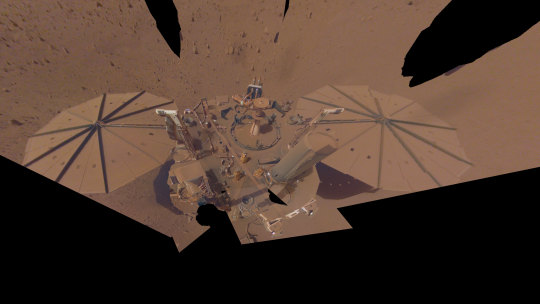
NASA’s InSight lander captured this selfie on Mars on April 24, 2022, the 1,211th Martian day, or sol, of the mission.
2. Data analyzed in 2023 from NASA’s retired InSight Mars lander provided new details about how fast the Red Planet rotates and how much it wobbles. Scientists leveraged InSight’s advanced radio technology, upgrades to the Deep Space Network, and radio signals to determine that Mars’ spin rate is increasing, while making the most precise measurements ever of Mars’ rotation.
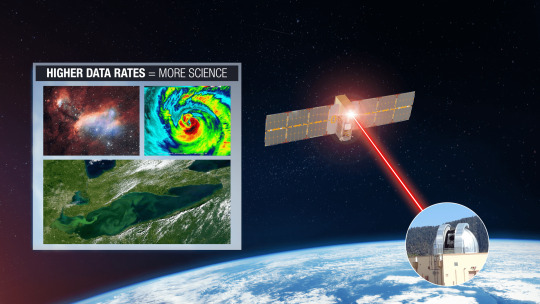
TBIRD is demonstrating a direct-to-Earth laser communications link from low Earth orbit to a ground station on Earth.
3. We set a new high record! The TeraByte InfraRed Delivery (TBIRD) payload – also demonstrating laser communications like ILLUMA-T and LCRD – downlinked 4.8 terabytes of data at 200 Gbps in a single 5-minute pass. This is the highest data rate ever achieved by laser communications technology. To put it in perspective a single terabyte is the equivalent of about 500 hours of high-definition video.
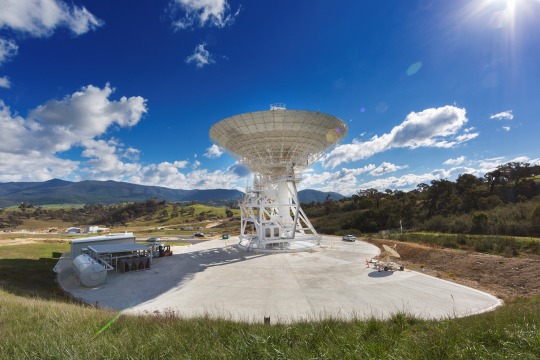
A 34-meter (112-foot) wide antenna at Canberra Deep Space Communications Complex near Canberra, Australia.
4. This year we celebrated the Deep Space Network’s 60th anniversary. This international array of antennas located at three complexes in California, Spain, and Australia allow us to communicate with spacecraft at the Moon and beyond. Learn more about the Deep Space Network’s legacy and future advancements.
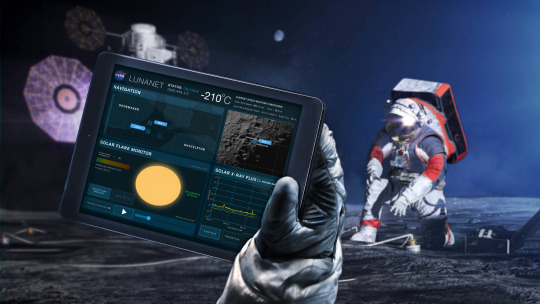
An illustration of the LunaNet architecture. LunaNet will bring internet-like services to the Moon.
5. We are bringing humans to the Moon with Artemis missions. During expeditions, astronauts exploring the surface are going to need internet-like capabilities to talk to mission control, understand their routes, and ensure overall safety. The space comm and nav group is working with international partners and commercial companies to develop LunaNet, and in 2023, the team released Draft LunaNet Specification Version 5, furthering development.
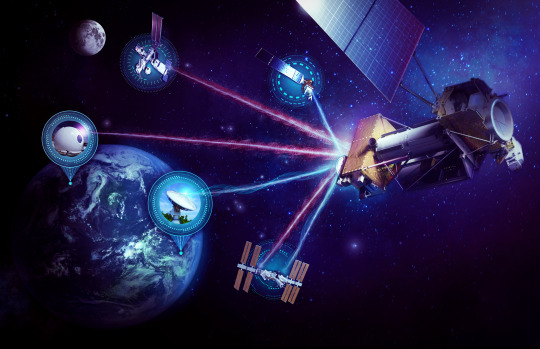
The High-Rate Delay Tolerant Networking node launched to the International Space Station in November and will act as a high-speed path for data.
6. In addition to laser communications, ILLUMA-T on the International Space Station is also demonstrating high-rate delay/disruption tolerant networking (HDTN). The networking node is showcasing a high-speed data path and a store-and-forward technique. HDTN ensures data reaches its final destination and isn’t lost on its path due to a disruption or delay, which are frequent in the space environment.

The Communications Services Project (CSP) partners with commercial industry to provide networking options for future spaceflight missions.
7. The space comm and nav team is embracing the growing aerospace industry by partnering with commercial companies to provide multiple networking options for science and exploration missions. Throughout 2023, our commercialization groups engaged with over 110 companies through events, one-on-one meetings, forums, conferences, and more. Over the next decade, NASA plans to transition near-Earth services from government assets to commercial infrastructure.

Middle and high school students solve a coding experiment during NASA's Office of STEM Engagement App Development Challenge.
8. Every year, NASA’s Office of STEM Engagement sponsors the App Development Challenge, wherein middle and high school students must solve a coding challenge. This year, student groups coded an application to visualize the Moon’s South Pole region and display information for navigating the Moon’s surface. Our space communications and navigation experts judged and interviewed students about their projects and the top teams visited NASA’s Johnson Space Center in Houston!
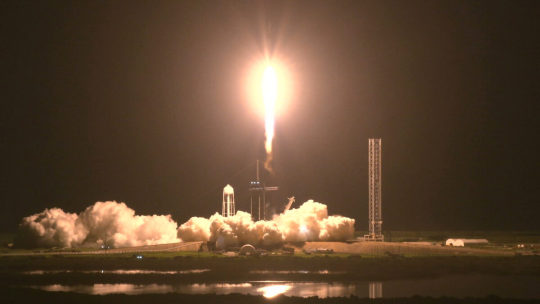
A SpaceX Falcon 9 rocket soars upward after liftoff at the pad at 3:27 a.m. EDT on Saturday, Aug. 26, from Kennedy Space Center’s Launch Complex 39A in Florida carrying NASA’s SpaceX Crew-7 crew members to the International Space Station. Aboard SpaceX’s Dragon spacecraft are NASA astronaut Jasmin Moghbeli, ESA (European Space Agency) astronaut Andreas Mogensen, JAXA (Japan Aerospace Exploration Agency) astronaut Satoshi Furukawa, and Roscosmos cosmonaut Konstantin Borisov.
9. The Near Space Network supported 19 launches in 2023! Launches included Commercial Crew flights to the International Space Station, science mission launches like XRISM and the SuperBIT balloon, and many more. Once in orbit, these satellites use Near Space Network antennas and relays to send their critical data to Earth. In 2023, the Near Space Network provided over 10 million minutes of communications support to missions in space.
Here’s to another year connecting Earth and space.
Make sure to follow us on Tumblr for your regular dose of space!
1K notes
·
View notes
Text
here's like. a plainly known fact: the Boeing 737 was originally produced on a military contract as a cargo hauler for tanks, large equipment, and troops alongside. it was passed up and we now have the iconic galaxy and c-130. the nose-loading, gigantic-bodied, quadruple-engined humpbacked lump of a plane was, then, resold to the civilian market as a cargo hauler and passenger transport. this is not some wild conspiracy, it's just a fact about military contractors, and, thereby, pretty much the entirety of the US aerospace industry: military contracts come first, military contracts are what actually pay for the whole operation, but military contracts aren't reliable, so it's valuable to let civilian-facing branches procure some of their own funding. this is true of all military contractors, I concur! boeing, lockheed, raytheon, all the rest - and, yet, weirdly, people suddenly get defensive when the exact same analysis is applied to their pet favourite rocket company, SpaceTwitter (née SpaceX). weird! suddenly it's very important to state that the engineers really believe in the noble goal and mission of space exploration, and that they don't even really have that much of a connection to the military, and actually everyone launches secret military satellites on classified contracts so why do you have to bring that up when it's really about going to mars I swear there's some possible way to make that profitable
343 notes
·
View notes
Text
something i saw once that has stuck with me ever since was a comment on a post about some scientific discovery made by the mars rover perseverance that said "why are we wasting time looking at rocks when we should be preparing for colonization?
another comment was on a post about the environmental issues surrounding the spacex launch site in southern texas, which said "human expansion to mars delayed to protect some turtles"
and comments like these perplexed me. space is a subject of science, and people interested in space are always talking about the wonders of the unknown, and how many fascinating and beautiful things are out there. so how could people interested in space be so fundamentally uncaring and incurious not only about the places they're supposedly interested in, but about nature in general?
it's not just random people in twitter replies who are like this. elon musk once posted this picture:

thing is, that's not mars, that's the moon during a lunar eclipse (when sunlight tinted red after passing through earth's atmosphere lights up the moon in earth's shadow). you'd think that someone known for wanting to bring people, himself included, to mars would care enough about mars to at least know what it looks like, but apparently not
he also rather infamously says he wants to nuke the ice caps of mars to warm the planet up. the ice caps of mars look like this, by the way (image credit: ESA/DLR/FU Berlin/Aster Cowart):

they are beautiful places, that hold an irreplaceable scientific record of the geologically recent martian climate, and are shaped by unique processes. there's no other place quite like them in our solar system. but elon musk thinks we should nuke them. again, no care, no curiosity
nothing has made me feel jaded and cynical about the entire enterprise of spaceflight quite like learning that the people ultimately in charge of it and funding it don't give a shit about space. it's not just elon musk. space nerds love quoting kennedy's "we choose to go the moon" speech as inspiration, but kennedy is also on record saying "I'm not that interested in space" in a conversation where he was arguing to the nasa administrator that they should prioritize beating the soviets to the moon over space science. no curiosity, only a desire for geopolitical showmanship and maintaining hegemony. it's the same thing when many modern politicians only seem to care about space exploration as a way of keeping a technological lead over china
this leaves the people who do genuinely love and care about space in an awkward position. they basically have two choices: A) become jaded and give up on space exploration, or at least parts of it (abandoning human spaceflight but maintaining interest in robotic science missions, for example) or B) give in. work with military contractors. spout the jingoistic rhetoric that the politicians writing the checks want to hear, even if you don't believe it. go along with the colonialist ideology, the hypercapitalism, and the extractivism. sell your soul for pictures of mars and let your passions be exploited for the ends of powerful people who don't care
the sad reality is that our society only values those things deemed useful or profitable. we hear it all the time. the idea that schools should only teach things useful for jobs, that people who try to make a living in fields like art, the humanities, or philosophy are all getting useless degrees and will inevitably end up stuck working retail, and of course, the idea that space exploration is a waste of time and money
space nerds are often deeply insecure about their greatest passion, because it's true, space exploration offers no immediate practical benefit. but they still love space and want to explore it
so they believe the lies. they repeat the colonialist ideology. they say there's money in mining asteroids, that we can terraform planets and let number go up forever. they let themselves be exploited by companies and governments that see everything in the universe and all the people in it as things to be used, and that will ultimately chew them up and spit them out if it's expedient to do so. and those who reject the ideology and keep their love for the cosmos pure often find themselves with no place in the project of space exploration
i don't know how to fix this, but i do hope that i will live to see the day when our curiosity and interest and love for the wider universe is valued for its own sake, and no longer shackled by colonialism, capitalism, and political ambitions
110 notes
·
View notes
Photo

Let’s go SpaceX! The world is ready for the trajectory of Space exploration to be changed.
2 notes
·
View notes
Text
I want to write a long post about my super conflicted feelings about SpaceX. I love space exploration and they are currently making the best rockets in the world to facilitate that exploration. And despite what some may think, Elon is a big part of that. Unlike literally everything else in the world, he actually knows his rocket shit.
Hence, my conflicted feelings.
And as much as I like dunking on Elon... blowing up big expensive rockets is traditionally part of designing big expensive rockets.
In fact, blowing up big expensive rockets might be the most important part of making a rocket that works.
So the general public might think that explosion was a giant failure, but the engineers see it as 3 minutes of extremely valuable data.
Sending a 40 story building into space has never been done before and could help us get back to the moon and maybe do some missions to Mars.
I could give a shit about colonizing Mars, as it is a really dumb idea. But I would love some astronauts getting there and doing some cool potato science and shit.
With shit?
In the end, I expect they will have to blow up a few more rockets before they make this work. And that's okay.
246 notes
·
View notes
Link
Astronomy Daily - The Podcast: 2nd September 2024
Welcome to another episode of Astronomy Daily from Downunder. It's Steve here, bringing you the latest space and astronomy news on this second day of spring and September 2024. We've got a mixed bag of stories for you this week, from China's high-resolution map of Mars to SpaceX's Falcon 9 mishap, and much more. Let's dive right in!
Highlights:
- SpaceX Falcon 9 Mishap: The Federal Aviation Administration (FAA) has cleared SpaceX to restart its Falcon 9 launches following an investigation into a rare mishap during a first stage booster landing. The booster tipped over and exploded while attempting to land on a droneship off the Florida coast. Despite the mishap, the mission successfully delivered 21 Starlink Internet satellites into orbit. This incident ended a streak of over three years of successful booster landings.
- NASA's Solar Sail Deployment: NASA's advanced composite solar sail system has successfully deployed in space. Launched on Rocket Lab's Electron vehicle, the solar sail reached full deployment on August 29. This innovative technology uses sunlight to guide its path through space and will be tested for maneuverability in the coming weeks. The data gathered will help design future solar sail missions for space weather monitoring, asteroid reconnaissance, and more.
- Europa Clipper's Solar Arrays: NASA's Europa Clipper spacecraft has been fitted with gigantic solar arrays at the Kennedy Space Center. These arrays, each measuring 14.2 meters in length, are the largest ever developed by NASA for a planetary mission. They will help power the spacecraft as it investigates Jupiter's icy moon Europa, aiming to determine if its subsurface ocean could support life. The spacecraft is scheduled to launch on October 10 and will arrive at Jupiter in 2030.
- China's High-Resolution Mars Map: China's Tianwen-1 mission has created the first high-resolution global color map of Mars. Developed by the Chinese Academy of Sciences, this map has a spatial resolution greater than 1 km and could support future crewed missions to Mars. The map was created using countless remote sensing images acquired by the Tianwen-1 orbiter.
- Boeing's Starliner Return: NASA has announced that Boeing's Starliner capsule will depart the International Space Station no earlier than September 6. The capsule, which has faced multiple delays and technical issues, will return to Earth uncrewed. Astronauts Sonny Williams and Butch Wilmore, who were originally scheduled to return on Starliner, will now come back aboard a SpaceX Dragon capsule in February next year.
- DART Mission Debris: Debris from NASA's DART mission, which tested a kinetic impact to nudge an asteroid, could potentially reach Earth and Mars. While it's unlikely we'll see a meteor shower on Earth, the debris could result in meteors on Mars. The DART mission successfully shortened the orbit of the asteroid Dimorphos around its parent asteroid Didymos.
For more space news, be sure to visit our website at astronomydaily.io. There you can sign up for our free Daily newsletter, read insightful blog posts, and catch up on all the latest space and astronomy news with our constantly updating newsfeed.
Don't forget to listen to all our previous episodes as well. You can also follow us on social media. Just search for AstroDailyPod on Facebook, X, YouTubeMusic, and TikTok to stay connected with our community and never miss an update.
Until next time, keep looking up.
Sponsor Links:
NordPass
NordVPN
Malwarebytes
Proton Mail (for when you're ready to ditch gmail, outlook etc for a truly secure and private email...we did)
Become a supporter of this podcast: https://www.spreaker.com/podcast/astronomy-daily-the-podcast--5648921/support.
#9#astronomy#clipper#europa#falcon#high-resolution#international#map#mars#mishap#mission#nasa#return#sail#solar#space#spacex#starliner#station#tianwen-1
0 notes
Text
What is the first space related news story you can remember? Stories about being able to see a comet or eclipse do not count for this poll.
I suspect that Mars mission and space shuttle disaster will have the largest end results, due to media coverage and the age of tumblr’s userbase. My answer is “a space shuttle flight”, specifically the very last flight in 2011. I’d love if people tag their answer or add it in a comment.
21 notes
·
View notes
Text
Excerpt from this story from the New York Times:
As Elon Musk’s Starship — the largest rocket ever manufactured — successfully blasted toward the sky last month, the launch was hailed as a giant leap for SpaceX and the United States’ civilian space program.
Two hours later, once conditions were deemed safe, a team from SpaceX, the U.S. Fish and Wildlife Service and a conservation group began canvassing the fragile migratory bird habitat surrounding the launch site.
The impact was obvious.
The launch had unleashed an enormous burst of mud, stones and fiery debris across the public lands encircling Mr. Musk’s $3 billion space compound. Chunks of sheet metal and insulation were strewn across the sand flats on one side of a state park. Elsewhere, a small fire had ignited, leaving a charred patch of park grasslands — remnants from the blastoff that burned 7.5 million pounds of fuel.
Most disturbing to one member of the entourage was the yellow smear on the soil in the same spot that a bird’s nest lay the day before. None of the nine nests recorded by the nonprofit Coastal Bend Bays & Estuaries Program before the launch had survived intact.
Egg yolk now stained the ground.
“The nests have all been messed up or have eggs missing,” Justin LeClaire, a Coastal Bend wildlife biologist, told a Fish and Wildlife inspector as a New York Times reporter observed nearby.
The outcome was part of a well-documented pattern.
On at least 19 occasions since 2019, SpaceX operations have caused fires, leaks, explosions or other problems associated with the rapid growth of Mr. Musk’s complex in Boca Chica. These incidents have caused environmental damage and reflect a broader debate over how to balance technological and economic progress against protections of delicate ecosystems and local communities.
That natural tension is heightened by Mr. Musk’s influence over American space aspirations. Members of Congress and senior officials in the Biden administration have fretted privately and publicly about the extent of Mr. Musk’s power as the U.S. government increasingly relies on SpaceX for commercial space operations and for its plans to travel to the moon and even Mars.
An examination of Mr. Musk’s tactics in South Texas shows how he exploited the limitations and competing missions of the various agencies most poised to be a check on the ferocious expansion of the industrial complex he calls Starbase. Those charged with protecting the area’s cultural and natural resources — particularly officials from the Interior Department’s Fish and Wildlife Service and the National Park Service — repeatedly lost out to more powerful agencies, including the Federal Aviation Administration, whose goals are intertwined with Mr. Musk’s.
In the end, South Texas’ ecology took a back seat to SpaceX’s — and the country’s — ambitions.
Executives from SpaceX declined repeated requests in person and via email to comment. But Gary Henry, who until this year served as a SpaceX adviser on Pentagon launch programs, said the company was aware of the officials’ complaints about environmental impact and was committed to addressing them.
Kelvin B. Coleman, the top F.A.A. official overseeing space launch licenses, said he was convinced that his agency was doing its duty, which is to foster space travel safely.
“Blowing debris into state parks or national land is not what we prescribed, but the bottom line is no one got hurt, no one got injured,” Mr. Coleman said in an interview. “We certainly don’t want people to feel like they’re bulldozed. But it’s a really important operation that SpaceX is conducting down there. It is really important to our civilian space program.”
11 notes
·
View notes